“Charger and his son B2 were notorious for charging at vehicles. Bamera was like that in his prime. Now he is old.”
“Kankati killed Laxmi for territory and fed on a part of her body to show her dominance.” (Gruesome, but that’s how nature works!)
***
Charger, B2, Bamera, Kankati and Laxmi are (if you haven’t guessed by now) the names of tigers – past and present – in Bandhavgarh. And these are just a couple of the many many stories that we heard during our tour of Bandhavgarh this month. For the people there, tigers are not just animals in the forest. They are very much part of their daily life, their community, their family.
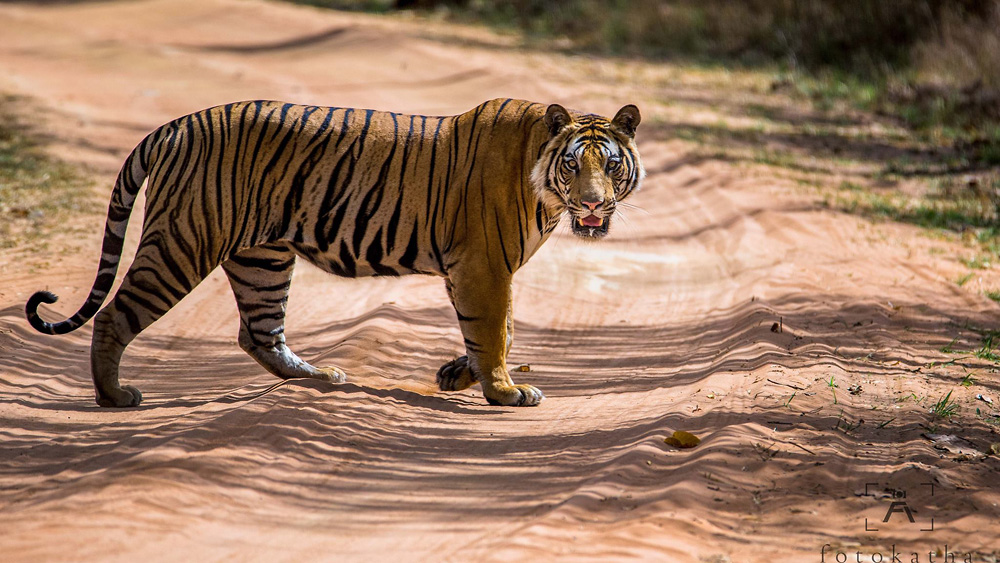
Tiger crossing a path in Bandhavgarh. Photograph by Saurabh Pandey
Boards around Bandhavgarh proclaim that the park has the highest density of tigers in India. And the anticipation builds up as one drives through the park. From the pugmarks that are seen everywhere. To the narratives of how the driver or the guide saw the male tiger here last week or the tigress with 3 cubs playing at a nearby water hole yesterday. To pug marks that seemed to indicate that we’d missed the tiger by a couple of minutes. To jeeps filled with contented faces that pass by from the opposite side. And the stories never cease. “The record for Bandhavgarh is 22 tigers in 1 safari! This was in the 1990s and the guide is still around. My personal record is 15 tigers.”
***
We were ourselves witness to a few stories. One started on the eve of our first safari, even before we entered the park! While waiting at the gate, we saw a male tiger walk through the grasses and cross over into the park. A few minutes later, another male tiger followed his footsteps. Since both were mature adults, the excitement levels soared as we expected some action. Finishing the park entry formalities, we drove further to a point where we hoped the tigers would eventually turn up. And turn up they did. Together!
Muscular animals, they seemed to be sizing each other up as they walked together. A fight seemed to be in the offing but no one was ready to make the first move. They walked around the grassland, sending gaurs galloping for safety.
And then, they walked away into the forest leaving us guessing as to what would happen. Watching 2 huge tigers together a few metres away…what a hair-raising experience.
As we went around the park for the rest of the safari, we heard that one of the tigers had fought with an older tiger – the Bamera male – and had injured him. By the time, we found the tiger, he had sought refuge in the undergrowth apparently nursing his wounds. We got to hear later that he had probably fractured one of his legs during the fight. Some said this would probably be his last fight as he was too old (apparently 14 years old) to hold off against the younger generation.
Our driver had been driving in this park for 7 years and hadn’t seen something like this before! Another tale to his kitty – 2 days later, he was still showing off the photographs he’d taken on his mobile phone.
***
One of the evenings, we were waiting for a tigress and her three cubs resting in the woods near a pond. It was a beautiful evening, with herds of Chital (Spotted Deer) and Sambar grazing near the pond. And then, there was a collective gasp from all the vehicles around as one of the tiger cubs came out into the open and sat down.
As the cameras were clicking away, another event started unfolding. A group of Sambars started heading to the water, very hesitatingly. Seemed like they sensed a predator’s presence but thirst was getting the better of them. And soon enough, they were joined by some Chital. At one point, warning calls went off among the group of deer – may be they’d smelt the tiger.
All this was happening less than 50 metres from the tiger cub. The young one, though, seemed not to care at all. Group after group came to the water, pausing all along the way, and returned unharmed! May be the tigers had all fed well.
Eventually, the tiger cub decided to walk down the ramp to the pond.
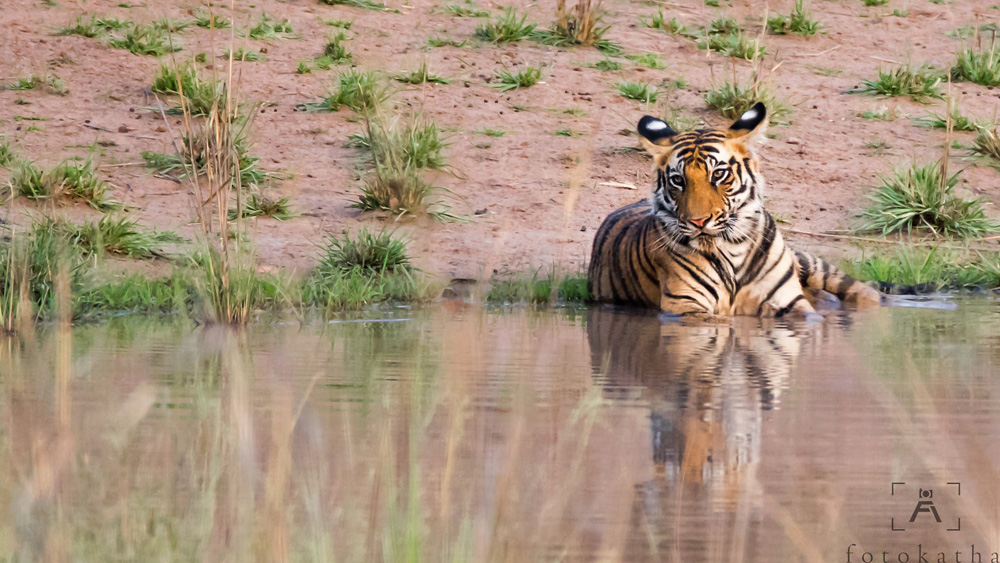
Photograph by Saurabh Pandey
It sat down next to the pond, cooling itself down. As if by cue, an Indian Peafowl opened its gorgeous tail and did a beautiful display. Was it in defiance or deference?
We were waiting for the rest of its family to join the cub when the guide announced that we had to leave. It was time to move on as we had to cover the rest of the park. As we were leaving, a second cub came out of the bushes to sit under the bamboo.
These were just two stories that we witnessed…among the countless ones that happen in the forests of India every day.
***
Of course, the beautiful forest of Bandhavgarh plays host to many other mammals and birds. Here are a few that we encountered during our drives.
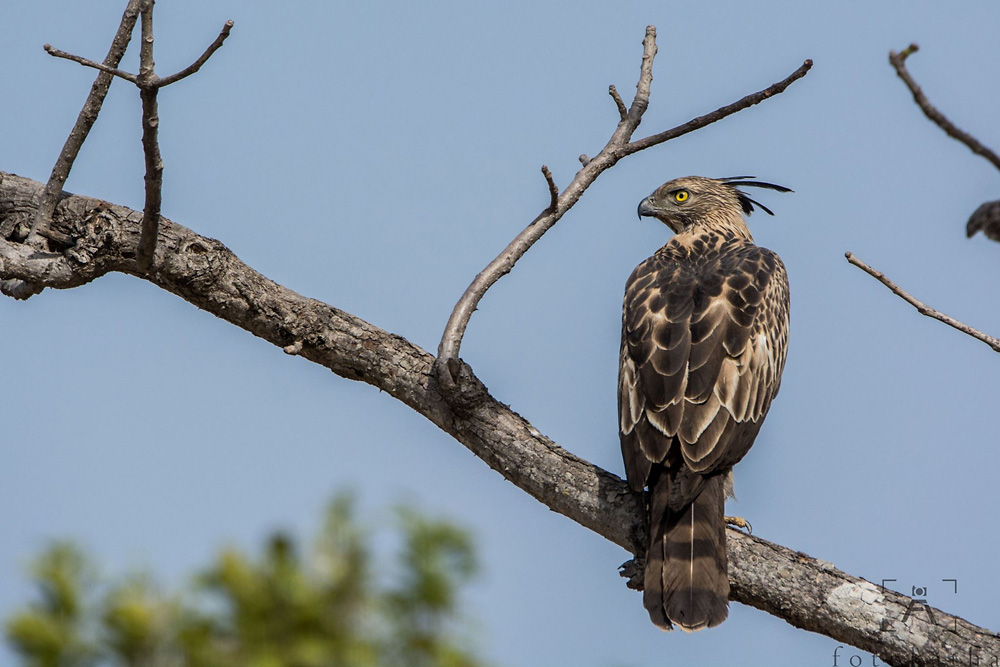
A Crested Hawk Eagle enjoying some time in the open. Photograph by Saurabh Pandey
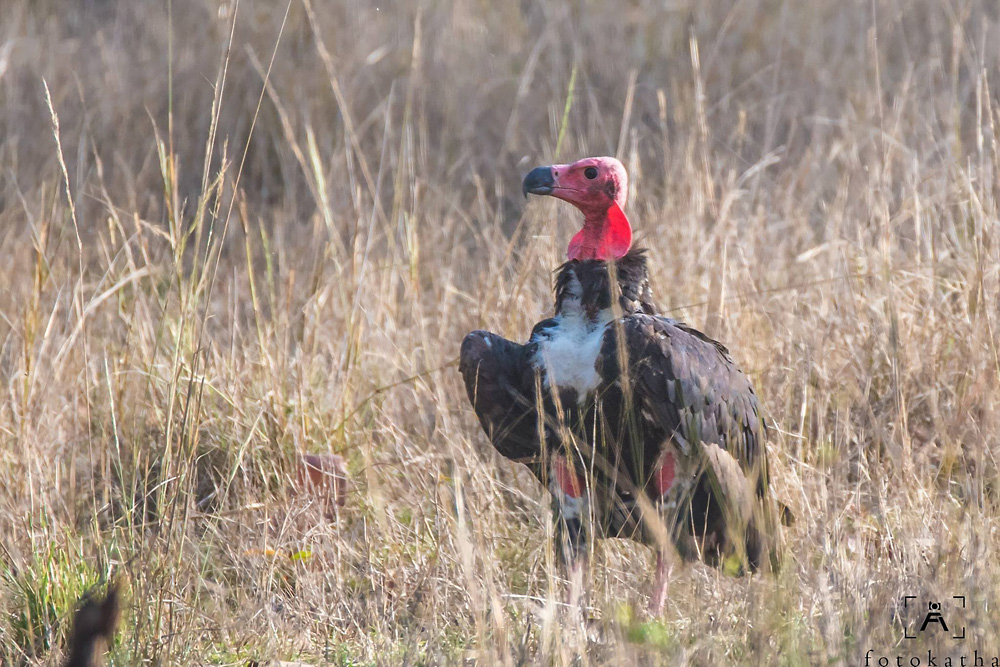
A Critically Endangered Red-headed Vulture makes an appearance by a Spotted Deer carcass. Photograph by Saurabh Pandey
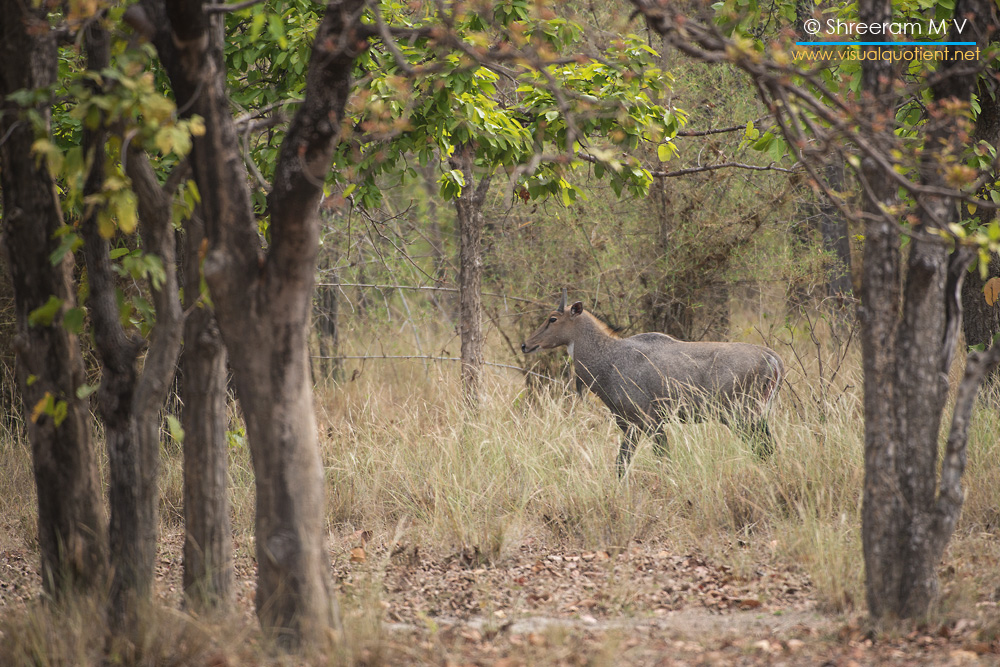
A Nilgai makes its way through the forest. It was interesting to come across India’s largest deer (Sambar) and the largest antelope (Nilgai) in the same forest.
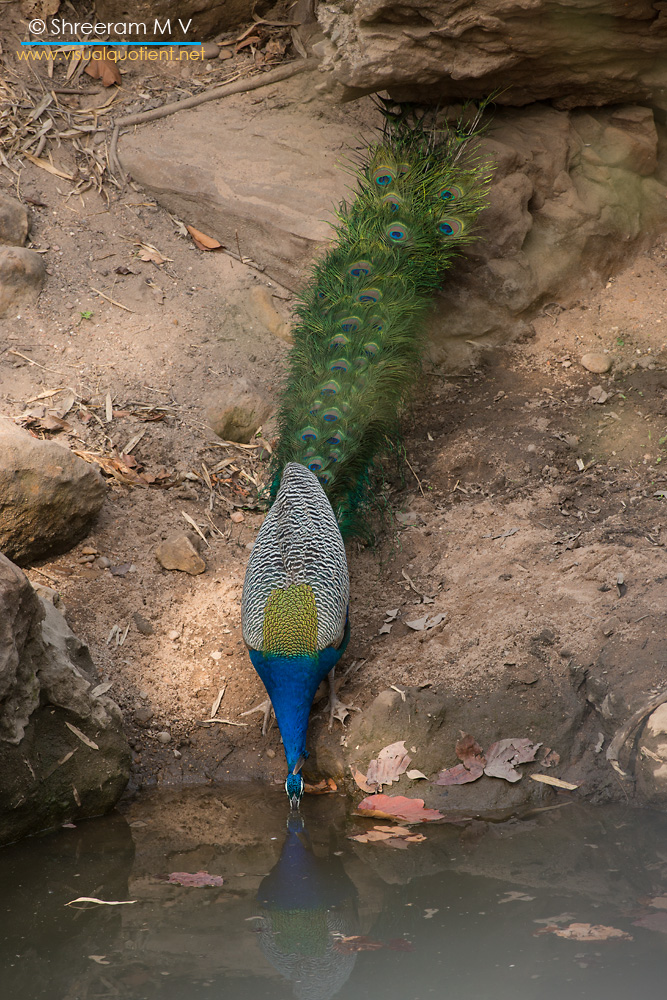
Everyone’s thirsty in summer. An Indian Peafowl, with its glorious breeding plumage, takes a sip at a water hole.
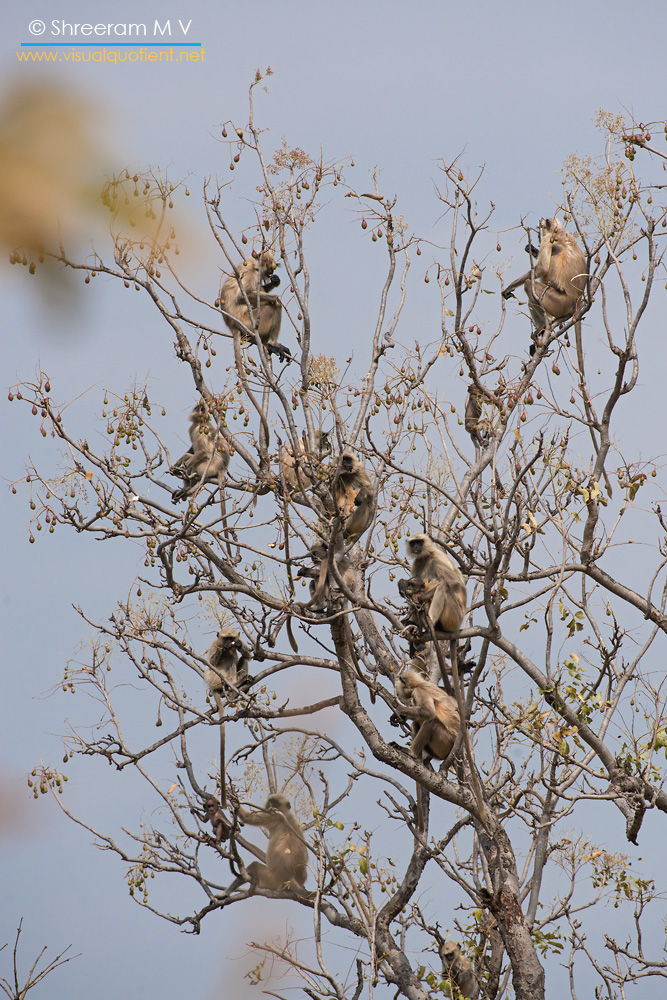
The dry season can sometimes yield surprises. A fruiting tree attracts a group of Grey Langurs. While Langurs are primarily leaf-eaters, they surely won’t say no to a treat like this.
We’ll be back there very soon with hopes of witnessing more stories from the wild!
Darter conducts Wildlife Photography Tours to various destinations across the country. Check out our collection of upcoming tours here.

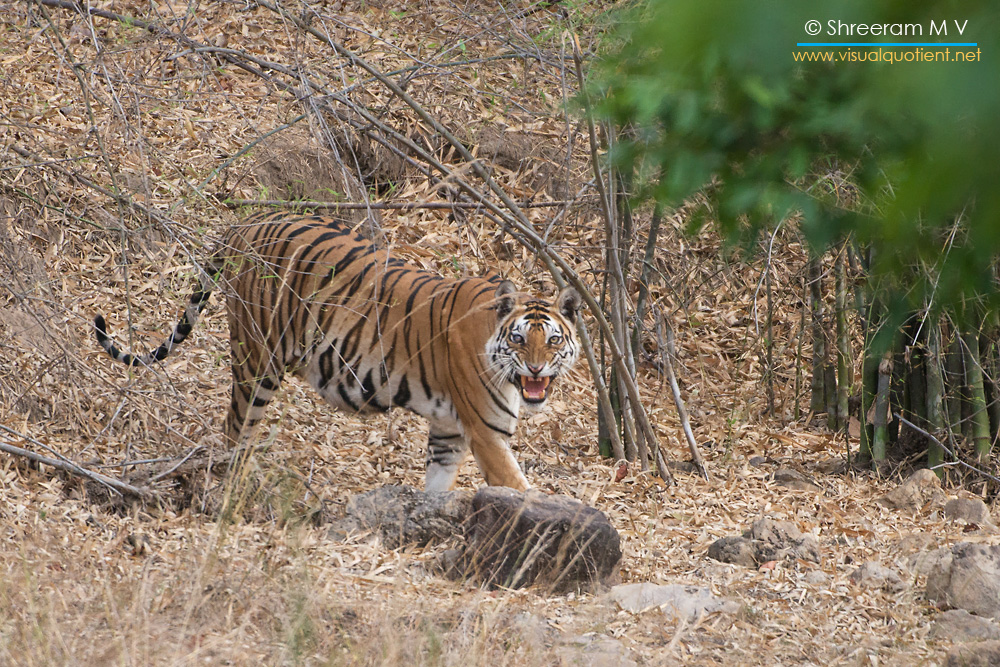


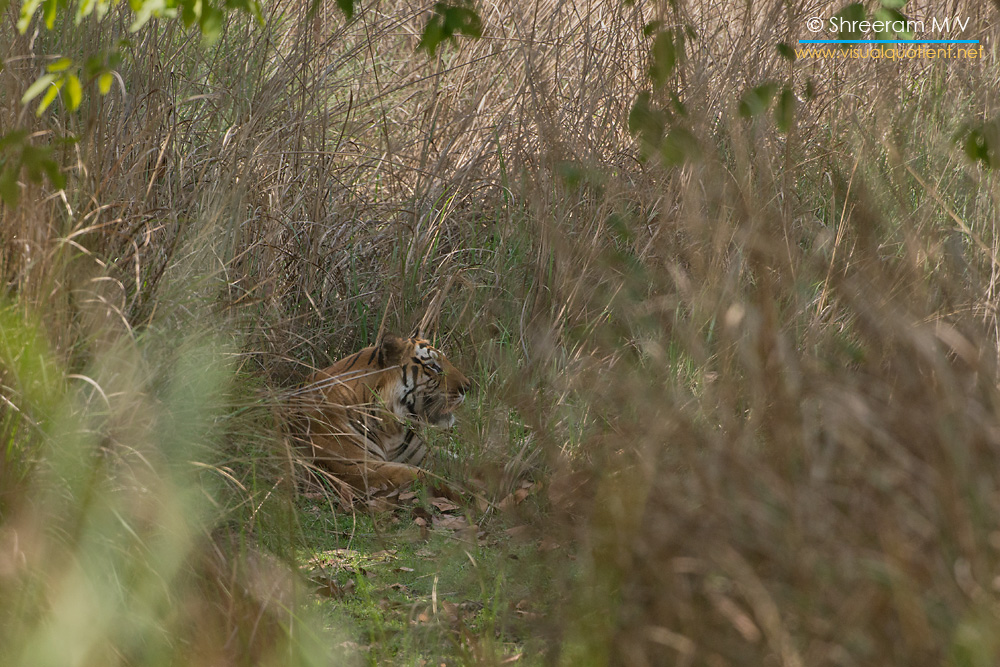
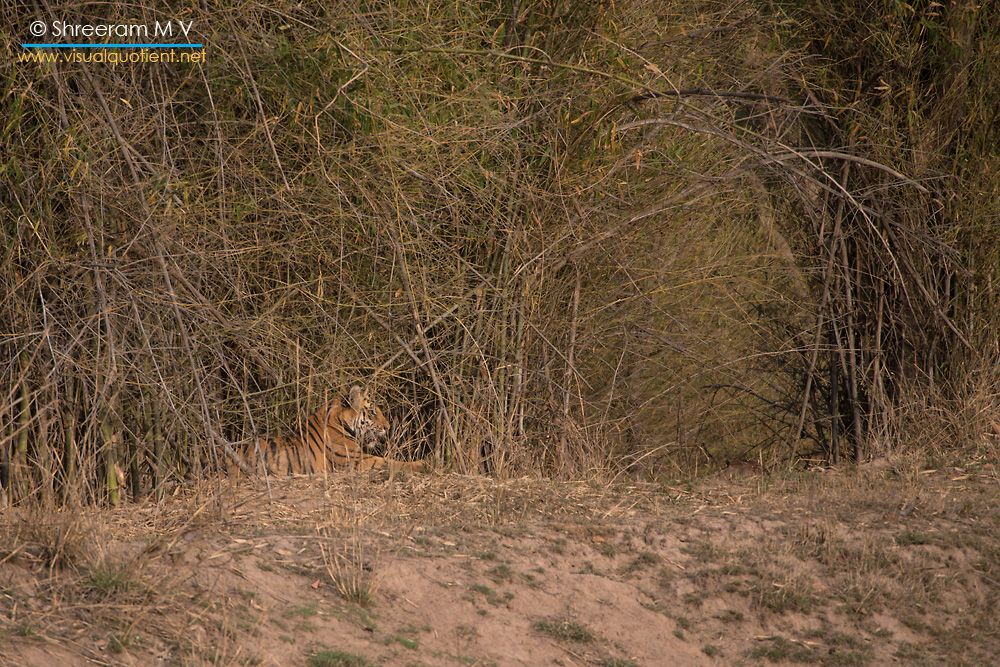
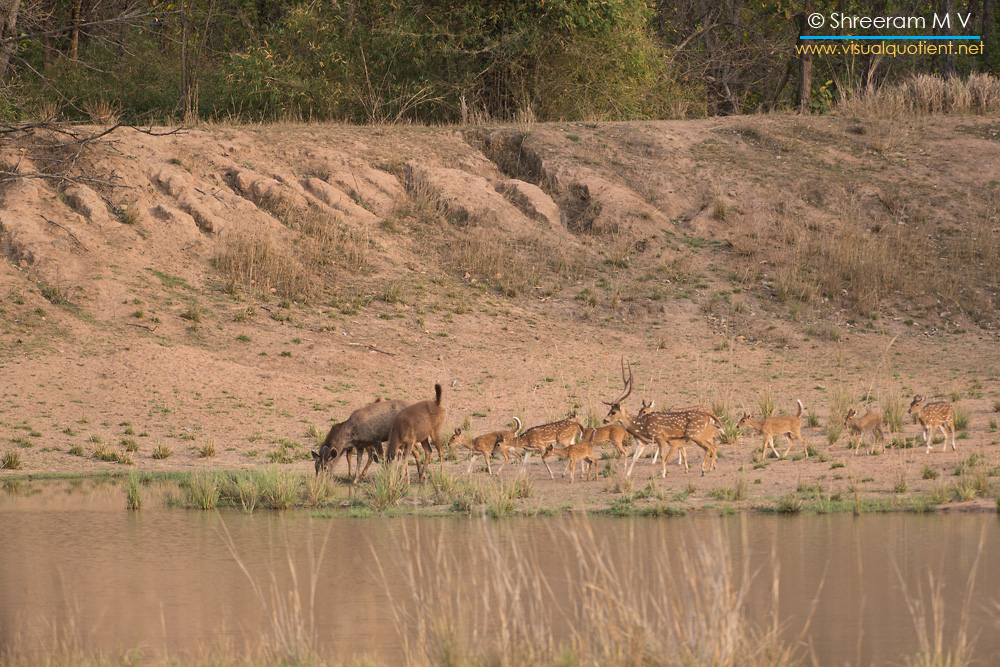
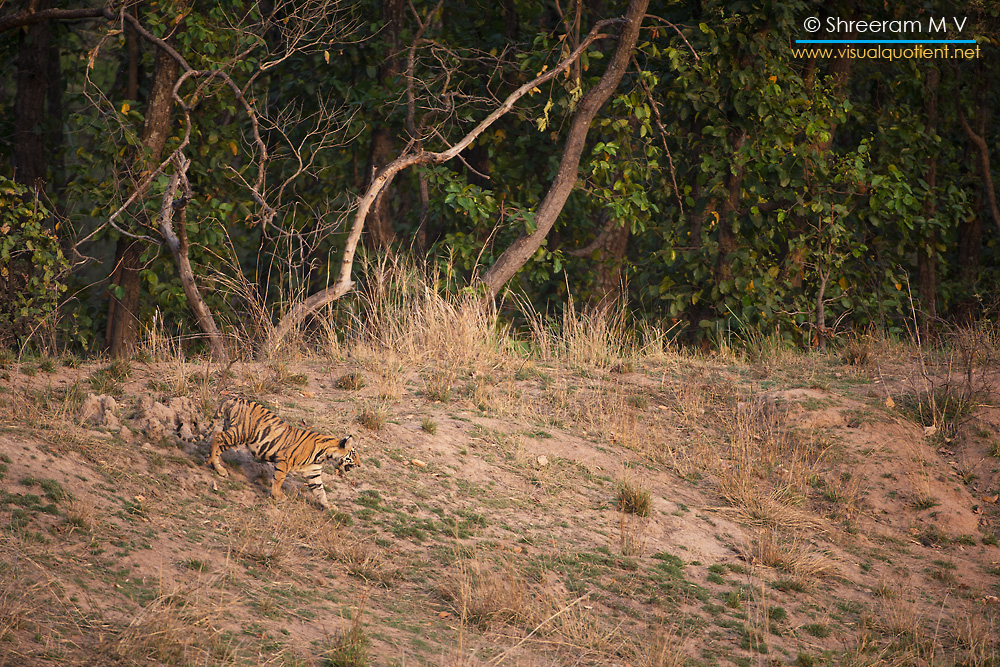
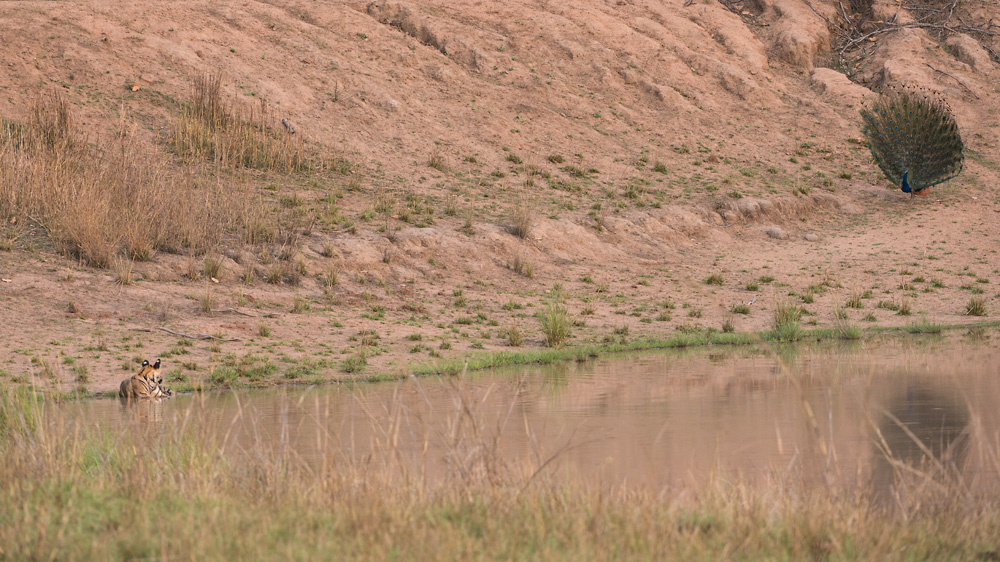
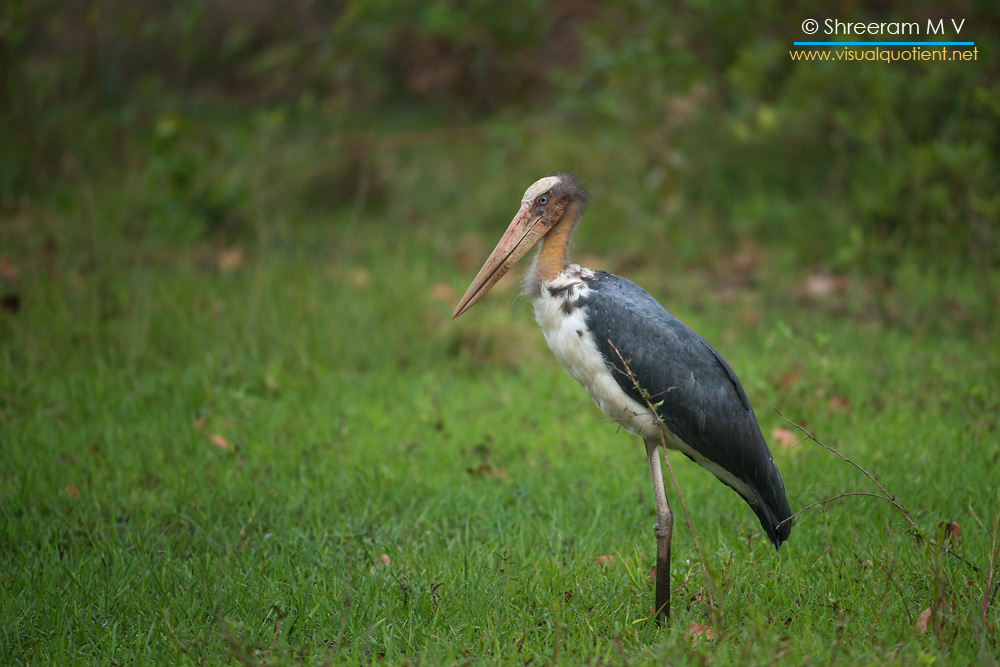
4 Comments